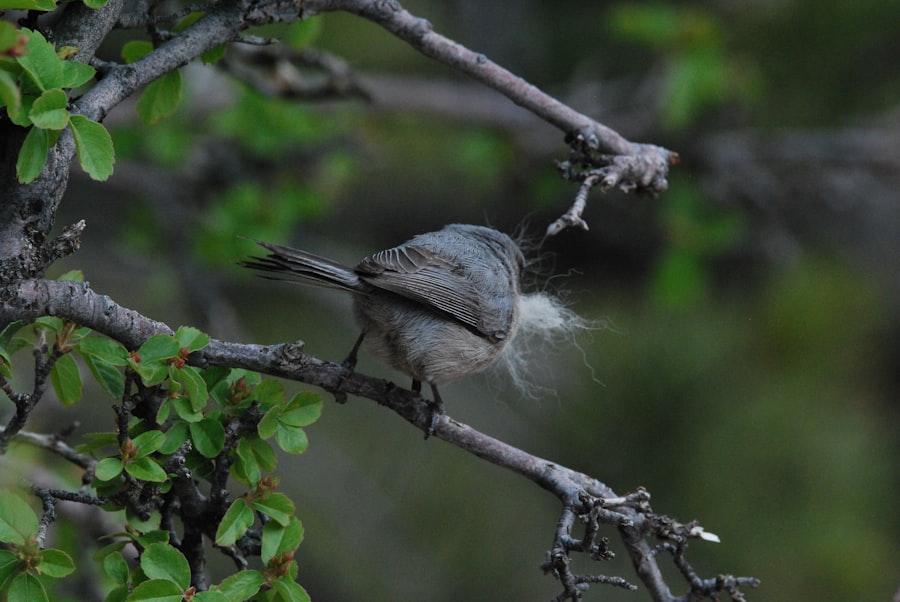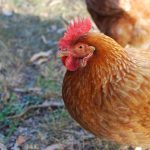Proper nesting behavior is crucial for the health and productivity of laying hens. This behavior is an innate instinct that drives hens to seek out suitable locations for egg-laying. When hens are unable to engage in natural nesting behaviors, they may experience stress and reduced egg production.
The nesting process typically involves several stages. First, a hen will search for a secluded and comfortable spot to lay her eggs. Once a suitable location is found, she will prepare the nest by scratching and arranging the nesting material.
After laying her eggs, the hen may exhibit brooding behavior, sitting on the eggs to incubate them and protect them from potential threats. Providing appropriate nesting areas and materials is essential for supporting this natural behavior. Poultry farmers should ensure that their hens have access to secure, comfortable nesting boxes with suitable bedding material.
This not only promotes the physical health of the hens but also contributes to their mental well-being. Understanding and accommodating the nesting behavior of laying hens is vital for maintaining a healthy and productive flock. By creating an environment that supports these natural instincts, farmers can optimize egg production and ensure the overall welfare of their hens.
Table of Contents
Key Takeaways
- Hens exhibit natural nesting behavior, including scratching and pecking at nesting material.
- Potential causes of nesting material displacement include overcrowding, poor nesting material quality, and stress.
- Nesting material displacement can lead to decreased egg production and quality.
- Solutions for keeping nesting material in place include using proper nesting boxes and providing enough nesting material.
- A comfortable nesting environment is crucial for hens to feel secure and lay eggs consistently.
- Tips for encouraging proper nesting behavior include providing secluded nesting areas and keeping nesting material clean and dry.
- Regular monitoring and adjusting of nesting areas can help maintain a comfortable and productive environment for hens.
Potential Causes
Lack of Suitable Nesting Areas and Materials
One common cause of improper nesting behavior in laying hens is the lack of suitable nesting areas and materials within the coop or outdoor environment. Hens require a secluded and comfortable space to lay their eggs, and if this is not provided, they may exhibit erratic nesting behavior or choose unsuitable locations for egg laying. Additionally, if nesting materials are not readily available or are not suitable for the hens’ preferences, they may struggle to create a proper nest, leading to stress and discomfort.
Overcrowding and Environmental Factors
Another potential cause of improper nesting behavior is overcrowding within the coop or outdoor area. When hens are overcrowded, they may struggle to find a suitable nesting site, leading to competition and conflict among the birds. This can disrupt their natural nesting behavior and lead to a decrease in egg production. Additionally, overcrowding can lead to increased stress and anxiety among the hens, further impacting their ability to exhibit proper nesting behavior. Environmental factors such as excessive noise, bright lighting, or extreme temperatures can also contribute to improper nesting behavior in laying hens.
Importance of a Comfortable Environment
Hens require a calm and quiet environment to feel secure and comfortable enough to engage in natural nesting behaviors. If the environment is too loud, bright, or uncomfortable, hens may struggle to find a suitable nesting site and may exhibit signs of stress and anxiety. It is important for poultry farmers to identify and address potential causes of improper nesting behavior in order to ensure the health and well-being of their laying hens.
Supporting Natural Nesting Behaviors
By providing suitable nesting areas, materials, and a comfortable environment, farmers can support their hens in exhibiting natural nesting behaviors and maximizing egg production.
Impact on Egg Production

Improper nesting behavior can have a significant impact on egg production in laying hens. When hens are unable to exhibit their natural nesting behaviors, they may become stressed and anxious, leading to a decrease in egg production. Additionally, if hens are unable to find suitable nesting areas or materials, they may choose unsuitable locations for egg laying, leading to broken or damaged eggs.
Stress and anxiety resulting from improper nesting behavior can also impact the quality of the eggs produced. Hens that are unable to engage in natural nesting behaviors may produce eggs with thinner shells or other quality issues, leading to decreased market value and consumer satisfaction. Additionally, when hens are unable to exhibit proper nesting behavior, they may become more susceptible to health issues, further impacting their ability to produce high-quality eggs.
Proper nesting behavior is essential for maximizing egg production and ensuring the health and well-being of laying hens. By providing suitable nesting areas and materials, as well as a comfortable and secure environment, poultry farmers can support their hens in exhibiting natural nesting behaviors and ultimately increase egg production and quality.
Solutions for Keeping Nesting Material in Place
There are several solutions for keeping nesting material in place within the coop or outdoor area. One effective solution is to provide nesting boxes with raised edges or lips to contain the nesting material. This can help prevent the material from being scattered or kicked out by the hens as they prepare their nests.
Additionally, using deep bedding in the nesting boxes can help keep the material in place and provide a comfortable and secure environment for the hens to lay their eggs. Another solution is to regularly monitor and replenish the nesting material to ensure that it remains in place and is readily available for the hens. This can involve adding fresh bedding or straw to the nesting boxes on a regular basis to maintain a comfortable and suitable environment for egg laying.
Additionally, providing ample nesting material throughout the coop or outdoor area can give hens options for creating their nests, reducing competition and potential conflicts among the birds. It is important for poultry farmers to consider the preferences of their laying hens when selecting nesting materials. Hens may have individual preferences for certain types of bedding or straw, so providing a variety of options can help ensure that all hens have access to suitable materials for creating their nests.
By implementing these solutions, farmers can support their hens in exhibiting natural nesting behaviors and ultimately increase egg production and quality.
Importance of Comfortable Nesting Environment
Creating a comfortable nesting environment is essential for supporting proper nesting behavior in laying hens. Hens require a secluded and secure space to lay their eggs, as well as suitable nesting materials to create a comfortable nest. Providing a comfortable nesting environment not only supports the natural instincts of laying hens but also contributes to increased egg production and quality.
One important aspect of creating a comfortable nesting environment is providing suitable nesting areas within the coop or outdoor space. This can involve providing nesting boxes with raised edges or lips to contain the nesting material, as well as deep bedding to create a comfortable and secure space for egg laying. Additionally, ensuring that there are ample nesting areas available can reduce competition among the hens and support their natural nesting behaviors.
In addition to providing suitable nesting areas, it is important to consider the overall environment within the coop or outdoor area. Hens require a calm and quiet environment to feel secure enough to engage in natural nesting behaviors. Minimizing noise, bright lighting, and other potential stressors can contribute to a comfortable environment that supports proper nesting behavior.
By creating a comfortable nesting environment, poultry farmers can support their laying hens in exhibiting natural nesting behaviors and ultimately increase egg production and quality.
Tips for Encouraging Proper Nesting Behavior

Provide Suitable Nesting Areas
One effective way to encourage proper nesting behavior is to provide suitable nesting areas within the coop or outdoor space. This can be achieved by providing nesting boxes with raised edges or lips to contain the nesting material, as well as deep bedding to create a comfortable and secure space for egg laying.
Reduce Competition and Cater to Individual Preferences
Ensuring that there are ample nesting areas available can reduce competition among the hens and support their natural instincts. Additionally, providing suitable nesting materials that cater to the preferences of the laying hens can help ensure that all hens have access to suitable materials for creating their nests. Hens may have individual preferences for certain types of bedding or straw, so providing a variety of options can be beneficial.
Maintain a Comfortable Environment
Regularly monitoring and replenishing the nesting material can help ensure that it remains in place and is readily available for the hens. It is also important to consider the overall environment within the coop or outdoor area when encouraging proper nesting behavior. Hens require a calm and quiet environment to feel secure enough to engage in natural nesting behaviors. Minimizing noise, bright lighting, and other potential stressors can contribute to a comfortable environment that supports proper nesting behavior.
Monitoring and Adjusting Nesting Areas
Monitoring and adjusting nesting areas within the coop or outdoor space is essential for supporting proper nesting behavior in laying hens. Regular monitoring of the nesting areas can help identify any issues or challenges that may be impacting the hens’ ability to exhibit natural nesting behaviors. This can involve observing the hens’ behavior when searching for suitable nest sites, as well as assessing the condition of the nesting material within the coop or outdoor area.
If issues are identified, adjustments can be made to improve the nesting areas and support proper nesting behavior. This may involve providing additional nesting boxes with raised edges or lips to contain the material, as well as replenishing the bedding or straw on a regular basis. Additionally, ensuring that there are ample nesting areas available can reduce competition among the hens and support their natural instincts.
Regular monitoring of the overall environment within the coop or outdoor area is also important for supporting proper nesting behavior. This can involve assessing noise levels, lighting conditions, and other potential stressors that may impact the hens’ ability to feel secure enough to engage in natural nesting behaviors. By regularly monitoring and adjusting nesting areas within the coop or outdoor space, poultry farmers can support their laying hens in exhibiting natural nesting behaviors and ultimately increase egg production and quality.
If you’re struggling with chickens kicking all the nesting material out of their coop, you may want to check out this article on chicken coop nest boxes for some helpful tips and solutions. This article provides valuable information on how to set up the perfect nesting boxes to keep your chickens comfortable and encourage them to lay their eggs in the designated area.
FAQs
Why do chickens kick out nesting material?
Chickens kick out nesting material as a natural instinct to create a comfortable and clean space for laying eggs. They often do this to rearrange the nesting box to their liking before laying eggs.
How can I prevent chickens from kicking out nesting material?
You can prevent chickens from kicking out nesting material by providing enough nesting material for them to create a comfortable nest. Additionally, ensuring that the nesting boxes are clean and free from any disturbances can help prevent this behavior.
What type of nesting material is best for chickens?
Common nesting materials for chickens include straw, hay, wood shavings, or shredded paper. It’s important to provide enough nesting material for chickens to create a comfortable and secure nest.
Are there any health concerns associated with chickens kicking out nesting material?
Chickens kicking out nesting material is a natural behavior and is not typically associated with any health concerns. However, it’s important to regularly clean and maintain the nesting boxes to ensure the health and well-being of the chickens.
Meet Walter, the feathered-friend fanatic of Florida! Nestled in the sunshine state, Walter struts through life with his feathered companions, clucking his way to happiness. With a coop that’s fancier than a five-star hotel, he’s the Don Juan of the chicken world. When he’s not teaching his hens to do the cha-cha, you’ll find him in a heated debate with his prized rooster, Sir Clucks-a-Lot. Walter’s poultry passion is no yolk; he’s the sunny-side-up guy you never knew you needed in your flock of friends!







